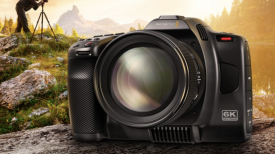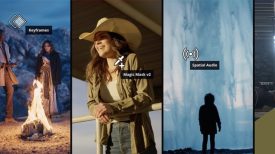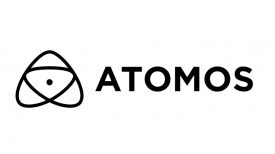
Sky News Washington cameraman Duncan Sharp has been shooting one-hour documentaries and “Special Reports” almost entirely on the Panasonic GH5. I sat down with Duncan to ask him why he chose to use the GH5, how he uses it, and the benefits it offers him over traditional larger ENG style cameras.
What is your background and how long have you been working in the industry?
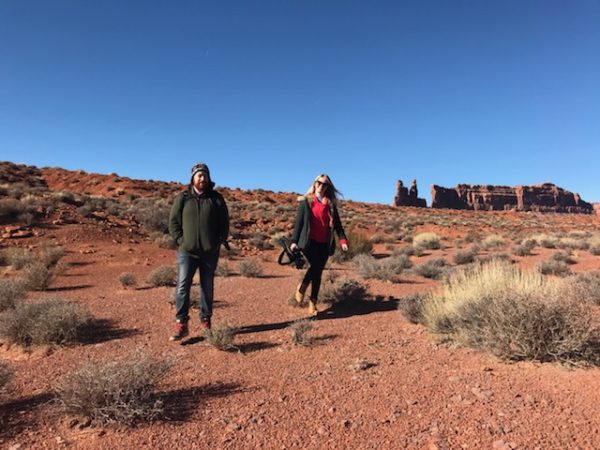
I am currently based in Washington DC for Sky News as one of four camera operator/editors based in the US.
I have worked for Sky News for 14 years and during that time I have also been based in the China and Brussels bureaus as well as working on a wide variety of stories while I was based in London.
As well as working on the day-to-day news demands, since arriving in Washington I’ve been given the opportunity to shoot and edit several one-hour documentaries and “Special Reports” that have been broadcast on various Sky channels.
I have won several White House News Photographer’s awards for filming and editing and I was also nominated for “Young Journalist of the Year” at the RTS in the UK.
I am sure you have access to an ENG broadcast camera, why do you choose to use a GH4 and GH5?
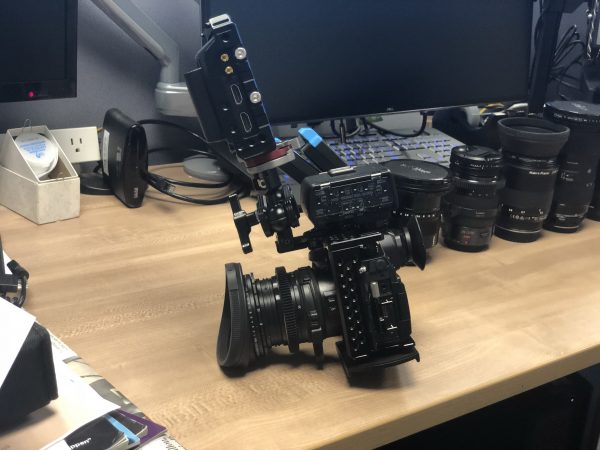
I am provided with several cameras to do my job including a Sony PXW-X400, a Sony PXW-X200, and a Sony X70. However, I also use my GH4/GH5 camera as much as possible. There are several reasons these cameras are often better suited to what I do and the “aesthetic” or “look” that a larger sensor camera provides is the most important one.
A lot of people would argue that a Micro 4/3 sensor isn’t large enough but compared to the 2/3’ chip it’s huge! I find the GH4/GH5 are a great combo for solo operator two camera interviews. I love the form factor and flexibility that the lenses provide me which help me to achieve the style that I think best tells the stories I work on. Obviously, news is quite a unique beast but I find that the portability and stabilization of the camera to be extremely versatile. In the past, we’ve all been jealous of the locations and positions that photographers can get to with the kit that they have been using for decades.
None of the above was more apparent than during President Trump’s election campaign in 2016.
Trump – Could it really happen?
Trump – America’s Next President
Numerous foreign media outlets were banned from covering the events where their kit clearly identified them as such. But I was able to queue up as a member of the public while concealing my GH4, a few lenses and a microphone in my bag. Using this kit gave me access to locations that many of my colleagues could not reach and this allowed me to shoot pictures that no one else could get from the official “press pen”. As well as this freedom I enjoyed, the camera’s features allowed me to shoot material at a much higher frame rate which added another aspect to my pictures.
Despite these huge advantages, I must point out where this setup is lacking. Following a subject while on a tripod or hand-held while broadcasting LIVE pictures is virtually impossible due to the lack of a broadcast lens. But this is exactly why this is not the only camera in my arsenal and for such instances, I would choose to use another, better-suited camera for the job.
Why choose the GH5 over say a Canon C300 Mark II or a Sony FS7 for instance?
Great question. I bought into the Micro 4/3 infrastructure early, starting with the GH2 back in the day. I had a few lenses (nothing compared to what I have now) and at that time it was a camera I only used on specific assignments – mainly in hostile environments or stories that required discretion.
At this early stage, there were concerns that this new breed of cameras was lacking some of the features that traditional ENG news cameras had but nobody could ignore the potential they were showing at the time.
I was very keen to get my hands on some of this kit but as it was not yet supported by the organisation that I worked for, I had to be smart and decide what would best do the job without costing too much of my own money. I invested in a GH4 kit and lenses while I was based in Brussels in 2013 – something I could never have done if I had needed to purchase the more expensive C300 or FS7 options. Their size and form would also have made it difficult to justify during these early days when I had to travel with essentially two kits – my large ENG camera and my GH4 kit.
It was a decision that not only paid off but also set the ball rolling (along with the help of a few other Sky News operators out there) to establish this new and alternative approach to capturing the news that sits alongside the more traditional broadcasting cameras that continue to sit at the centre of Sky News’ newsgathering operations.
This continues to develop today as improvements in technology and features are giving us the best of both worlds.
After years of developing my workflows and techniques, I now feel confident only using the larger ENG cameras for specific jobs and rely on my GH4/5 setup, coupled with a Sony X70, to deliver the majority of my work out on the road for Sky News. It’s not always perfect and arguably the ENG camera would produce better results on certain occasions but the form factor and flexibility more than makeup for this most of the time.
These days it is all about having choices
What do you like about the GH5?
Panasonic has nailed the colours. In my opinion, it’s nicer than the Sony A7sII
IBIS – I touched on this briefly, this has really been a game changer. I could never really move with the GH4, Hand holding shots was fine but only with image stabilized lenses. Now I can shoot with any of my prime lenses handheld.
Ex-tele mode – This is just fantastic for news and I use it all the time. It enables the camera to crop the sensor only using the HD section. This gives you a 2x crop factor while running around, with a push of a button I now turn my f2.8 12-35 (35mm equivalent) to a 24-140(ish). Same goes for picking off a shot from a distance with the 35-100. There are limitations – this mode gets pretty noisy at ISO1600 and above.
The kit is small, light and affordable by comparison. Making this idea for news. I can fit all my kit in a medium backpack.
Codecs – I don’t shoot in 4k, Sky news doesn’t have the infrastructure but having the option is great at 50p Occasionally I’ll shoot an interview in 4k so I can step into it in the edit. This was an issue when having to step down to progressive, Sky needs footage delivered in 1080i50, you can get away with turning 50p to 50i but not 25p. The new 200mb All-Intra codec is brilliant and actually a better codec than my x400 ENG camera. Of course, this is 50p only.
Finally, I would argue that with the range of codecs available for the GH5 – 10 bit 4k60p etc, the gap has closed considerably. You can’t beat the reach of the GH5 with the Leica 100-400mm it’s not fast but in daylight absolutely fine, with the EX-tele mode enabled this turns into a 1600mm lens. IBIS has been a game changer with the GH5 paired with the 12-35. It’s not quite as smooth as a gimbal but certainly not far off. Leagues better than walking with a large ENG camera on your shoulder.
Are there any downsides to using the GH5?
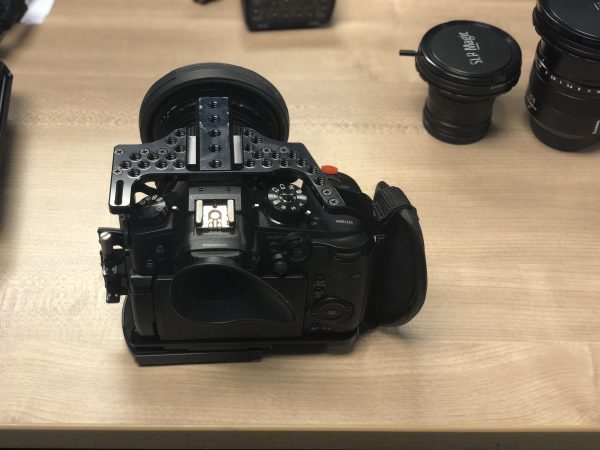
A few as far as I’m concerned. Its form factor has both pro’s and cons and this wouldn’t be exclusive to the GH5 – all DSLR suffer on something.
It takes me longer to assemble the camera, put the monitor on, XLR attachment, ENG cameras are ‘good to go’. Certainly, not a deal breaker but does add time. It is quite heavy and awkward to hold when the monitor is attached. With dual IS it isn’t a problem but my arms get tired quickly just because I can’t distribute the weight.
Low light – I don’t like to push it above ISO1600.
I’m really looking forward to getting my hands on the GH5S, also to see how clean the images are when using the EX-Tele mode.
How do you capture your audio?
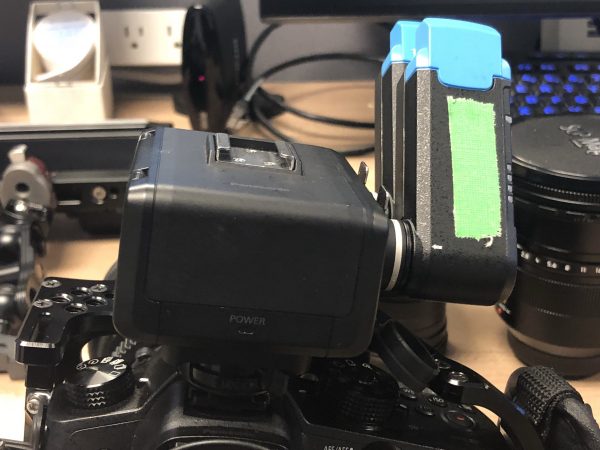
I use the Panasonic XLR attachment with two Sennheiser AVX Radio mics – I upgraded the standard mics to the MKE2-Gold Sennheiser Lavalier mics. This made a huge difference. The standard mics shipped with the units aren’t fit for purpose in my opinion.
I also use a Sennheiser MD-46 handheld mic for loud environments and snatched interviews – I just run an XLR to mini jack into one of the AVX transmitters. This mic is pretty good – the dynamic range isn’t amazing but with minimal work in Adobe Premiere Pro, you can get it sounding great, and importantly voices aren’t drowned out by loud background noise.
What lenses do you use?
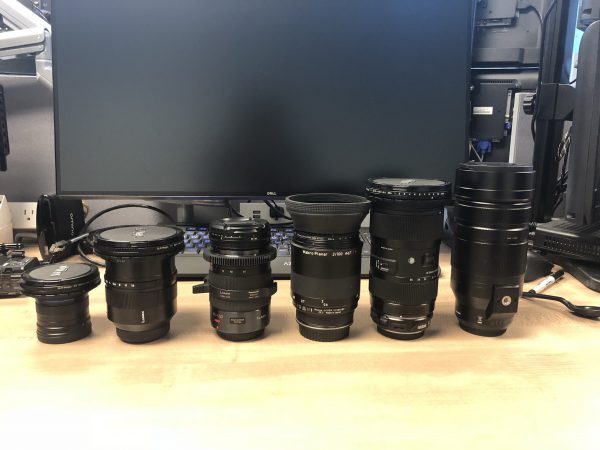
I’ve amassed quite a few lenses now:
Panasonic 12-35 mk2 – Great with dual IBIS – Main run and gun lens
Sigma 18-35 f1.8 with Speedbooster Ultra – Great for interviews and low light filming – I used this for both pieces to camera in the Utah piece and filming in both factories.
Laowa 7.5mm f2 – pin sharp wide angle.
Leica Nocticron 42.5 f1.2 – My go to interview lens, super sharp at 1.2 and has dual IBIS so also a great lens for hand held shots and interviews
Zeiss Millvus 100 f2 with speedbooster Ultra – 35mm equivalent focal length of 142mm – This is a great tight interview lens.
Panasonic G X Vario 35-100mm f/2.8 II POWER O.I.S. Lens – speaks for itself really
Panasonic Leica DG Vario-Elmar 100-400mm f/4-6.3 ASPH. POWER O.I.S. Lens – Get out of jail lens, I use this way more than I thought I would, Super handy for getting shots you’d only really get using an ENG camera. Super sharp through the range.
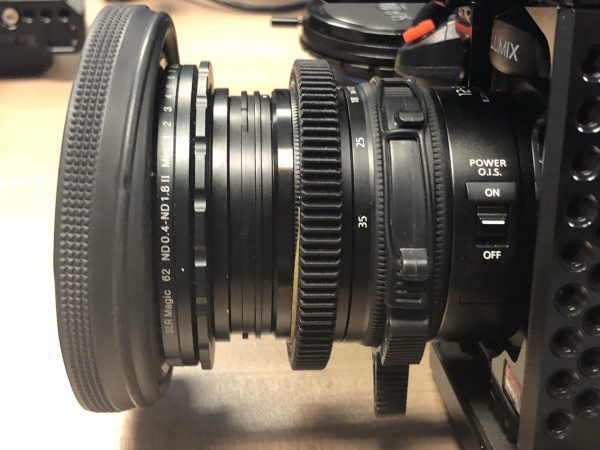
I like to have a variable ND filter on each of my lenses. That way I don’t waste time when swapping.
Are you shooting in V-Log or a standard picture profile?
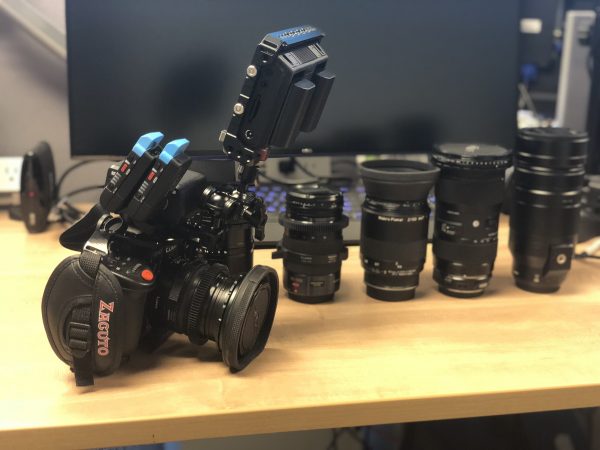
I shoot in Natural picture profile with saturation/contrast/sharpening turned down to -2. I just love the colours. LOG produces nice results and I have used it for an entire piece but for quick turnaround stuff it’s not that practical and I have to be able to send pictures back to London ready to go to air.
I definitely plan on filming a long-form piece entirely in LOG but want to wait until I have another GH5 / GH5S to match up when filming two camera interviews.
I use the Leeming LUT for LOG, which I would highly recommend.
– shot in LOG using LEEMING LUT – one day shoot and edit pieceHow big is the kit you take on the road, and what does it consist of?
GH5
Panasonic DMW-XLR1 XLR Microphone Adapter
2 x Sennheiser AVX mics
Blackmagic video assist with Small Rig cage
Smallrig articulating arm 2071
Alladin A-lite – top light
Zacuto GH5 cage
Rode Video Mic Pro with XLR to mini jack adapter (for use with Panasonic XLR arrachment)
6 x LP-E6 Batteries – with Blackmagic power supply (charges the batteries when connected to monitor)
6 x GH5 Batteries
2 x Dual USB GH5 Battery charger
1 x Dual LP-E6 Battery charger
2 x 16×9 Cine lock quick release for articulating arm to monitor / GH5
Lenses listed above
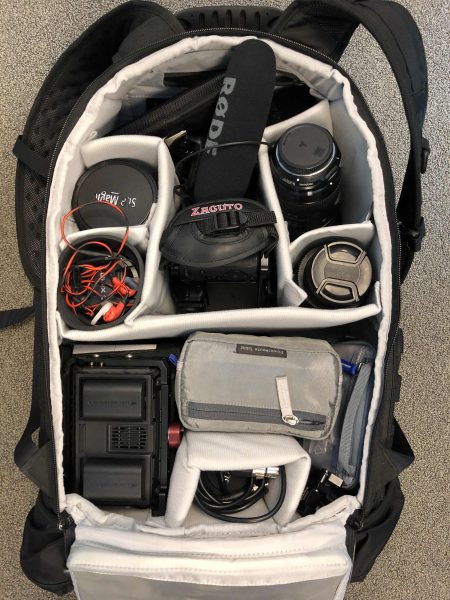
I can fit my entire kit including audio/monitor/lenses and body into the Lowpro Protactic 450 backpack.
It’s pretty heavy but it’s a great backpack so the weight doesn’t really bother me. This fits into all the overhead compartments on US domestic flights – some of the planes are really small, anything bigger and I could be faced with having to gate check it.
Are you editing your own material, if so, what system are you using and what is your workflow?
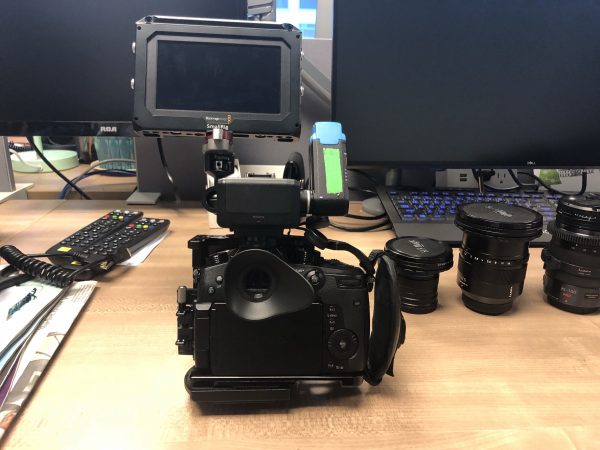
Yes, I edit my own material using Premiere Pro. The Blackmagic Design Video Assist monitor has become key to this workflow. The broadcast standard Sky News uses is 1080i50 – The GH5 only records 10bit in 50p so I have found a handy work around. I set the camera to output 1080i via HDMI and I use the Video Assist to record that signal into Pro Res 422. Before getting the monitor I was having to transcode all my material into 50i before the edit. It was really time-consuming and often put me under pressure. Now I can start editing instantly with Premiere Pro’s very clever ingest settings. Once this has been enabled and you’ve set your ingest destination – you drag the clips directly from the SD card to your premiere project and start editing right away, you can create sequences, mark clips, pick interviews. Seamlessly in the background Media encoder starts copying the clips you’ve introduced into your project to your scratch disk, once each clip has copied it lets premiere know to look for the clip there rather than the SD card. In a news environment, this is a game changer.
When shooting in slow motion I actually like to use media encoder to transcode for that entire scene. The monitor only reads the high frame rate clips as 50p as this conversion is done in camera, so to keep my shots in sequence I find it best to encode off the card
I use two methods to deliver the final cut piece. If it is for on the day news I use Media encoder – H264 2-Pass 10mb/ps target bitrate with a max of 30mb/ps. If it’s not for on the day then I just do a match source rewrap in Prores or MXF OP1a AVC-Intra 100
I use the built-in Lumetri colour panel in Premiere Pro for color grading.
Has Sky News been supportive of your decision to use the GH5?
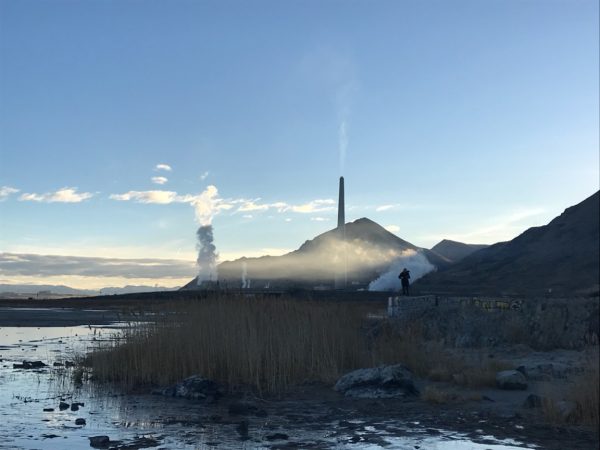
In the early days, there were concerns about how these cameras would stack up against traditional broadcast equipment, in particular regarding codecs, data rates, and formats.
Technological advances, coupled with extensive R&D in the field by a group of dedicated operators, have meant a lot of these concerns have been addressed and Sky News continues to develop their approach to using large sensor cameras that better serve their goals in an ever-changing news landscape.
Duncan’s body of work is certainly impressive and it just shows you what is capable with a small, compact camera kit. As I always say, it’s not about the kit, it’s how you use it. In the hands of a highly skilled operator such as Duncan, the GH5 can be used to great effect.
What did you think about Duncan’s work? Do you have any questions for him? Are you shooting news or documentaries on small cameras? Let us know in the comments section below.



